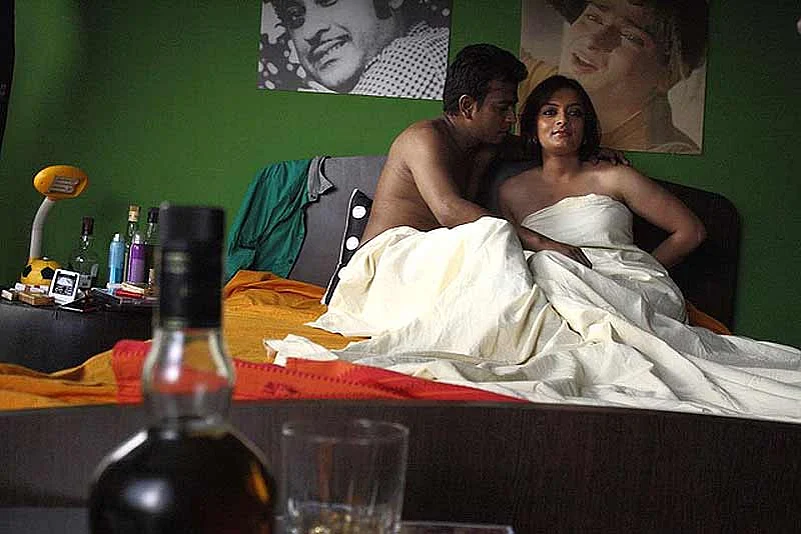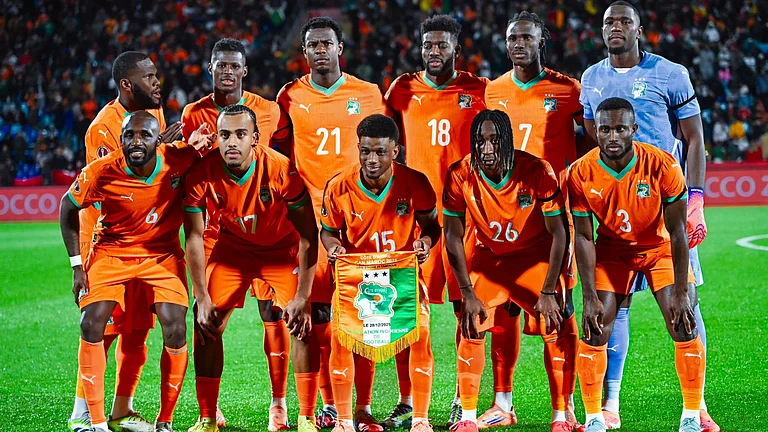In Shukno Lanka, Gaurav Pandey’s acclaimed 2010 film that deals with the struggles of an ageing, yet junior, artiste, veteran Bengali actress Debashree Roy plays a filmmaker’s wife who is envious of his young mistress, tries to win him back, and has a scene with co-actor Sabyasachi Chakraborty that is charged with sexual tension. She acts with such eclat that audiences watching the film with their families had no reason to squirm even a whit.

Aparajita Tumi The film deals with infidelity and contemporary sexual mores
Fade to 1981. “No, no, I will not do these scenes. Please don’t make me do them, Rinadi,” Debashree Roy remembers pleading with Aparna Sen when she was to shoot her first love-making scene in a bedroom at the age of 16 for Sen’s directorial debut, the award-winning 36 Chowringhee Lane. “I was extremely nervous before the shoot,” recalls Roy. The scenes between her and co-actor Dhritiman Chatterjee—whom Roy recalls meeting for the first time and thinking, “Oh my God, I have to get intimate with this complete stranger?”—were to become iconic because it was probably the first time in Bengali cinema that love-making between a man and woman was depicted, as Roy describes, “realistically, as it happens in real life”. The scene had Roy’s Nandita and Chatterjee’s Samaresh make love passionately, with the camera exploring as much the sensuality of their expressions as capturing the physicality of their movements. “I was so inhibited partly because at that time such scenes were not common at all in Bengali cinema,” says Roy.
Thirty-one years later, they are. Almost all Bengali releases in these recent years, whether arthouse or mainstream, either have sexual content, that is, at least one love-making or intimate scene, or have themes that revolve around eroticism or sexuality. It is also refreshing that none of it looks deliberately grafted on. And unlike Debashree during 36 Chowringhee Lane, scenes depicting sexuality don’t make today’s actors cringe and plead with their directors to spare them an ordeal.
Shooting a scene for Charulata 2011, which deals with the theme of a woman’s loneliness, both psychological and physical, actress Rituparna Sengupta didn’t bat an eyelid when she was asked by director Agnidev Chatterjee to get up close and personal with co-actor Dibyendu Mukherjee. Their scenes together involved pretty much the whole range of actions, right from foreplay—caressing and kissing—leading to fervent love-making, and all shot aesthetically. “Shooting such scenes do demand a great deal of enactment in which physical proximity is required. We are not only expected not to shy away from them, but we willingly don’t, because we actors know it is usually necessary for the denouement of the story,” says Rituparna matter-of-factly. So what has made this change to come about in the past few years in a cinematic tradition that otherwise had been progressive, yet prudish (many didn’t like the kissing scene in Ray’s Ghare Baire) when it came to depicting physical intimacy? “Bengali cinema has come of age,” replies Rituparna.

Shukno Lanka A story of filmdom, has a sexually charged scene
Like Charulata 2011, which revolves around a woman’s quest for her own identity, linked intrinsically and unabashedly to her sexuality, many films released in the last two or three years deal with adult themes. In Bedroom, Mainak Bhoumik deals with complicated relationships; the filmmaker delineates the sexual behaviour of a set of urban individuals in Calcutta. In the movies of Rituparno Ghosh—from Dohon to Doshor—the aberrations of sexuality are integral themes, as are ‘alternate sexual identities’ the themes of his more recent films like Chitrangada. In the latter, actors Jisshu Sengupta and Rituparno himself—playing gay lovers—have intimate love-making scenes.

Antarmahal Explores sexual aggression, its links with masculinity
Aniruddha Roy Chowdhury, who won the national award for best film with Antaheen, too delves into the theme of love and sexuality with Aparajita Tumi, in which infidelity and sexuality is treated with aestheticism. “There comes a moment in the script when if you don’t place a certain scene at a specific place it would seem something is missing. It is a natural progression. Just like in life, when you have the desire to hold someone’s hand or kiss someone, you don’t need to plan it. Likewise, in cinema, love-making sequences should be spontaneous. Otherwise, they would appear unnecessary,” says Roy Chowdhury.
Gaurav Pandey’s next film Hanuman.com is an exploration of virtual love. He says such themes are now an inseparable part of Bengali films. “You have to remember that love and sex are an integral part of life and to pretend that it does not exist is to do grave injustice to your own story and script, because then you are leaving that aspect of the story and script incomplete. It has to be shown as it is. Eroticism is more abstract and exists in the realm of desire. Sexuality is more manifest and physical.”

Ranjana Ami Aar Ashbona An ageing rockstar has a crush on his protege
So, how was it this time for Debashree Roy to get ‘intimate’ before the camera with co-actor Sabyasachi Chakraborty, all those years after 36 Chowringhee Lane? Did she feel any trepidation like she did before those scenes for Rinadi’s film? “No, Bengali cinema has come of age. And so have I,” she laughs.


























